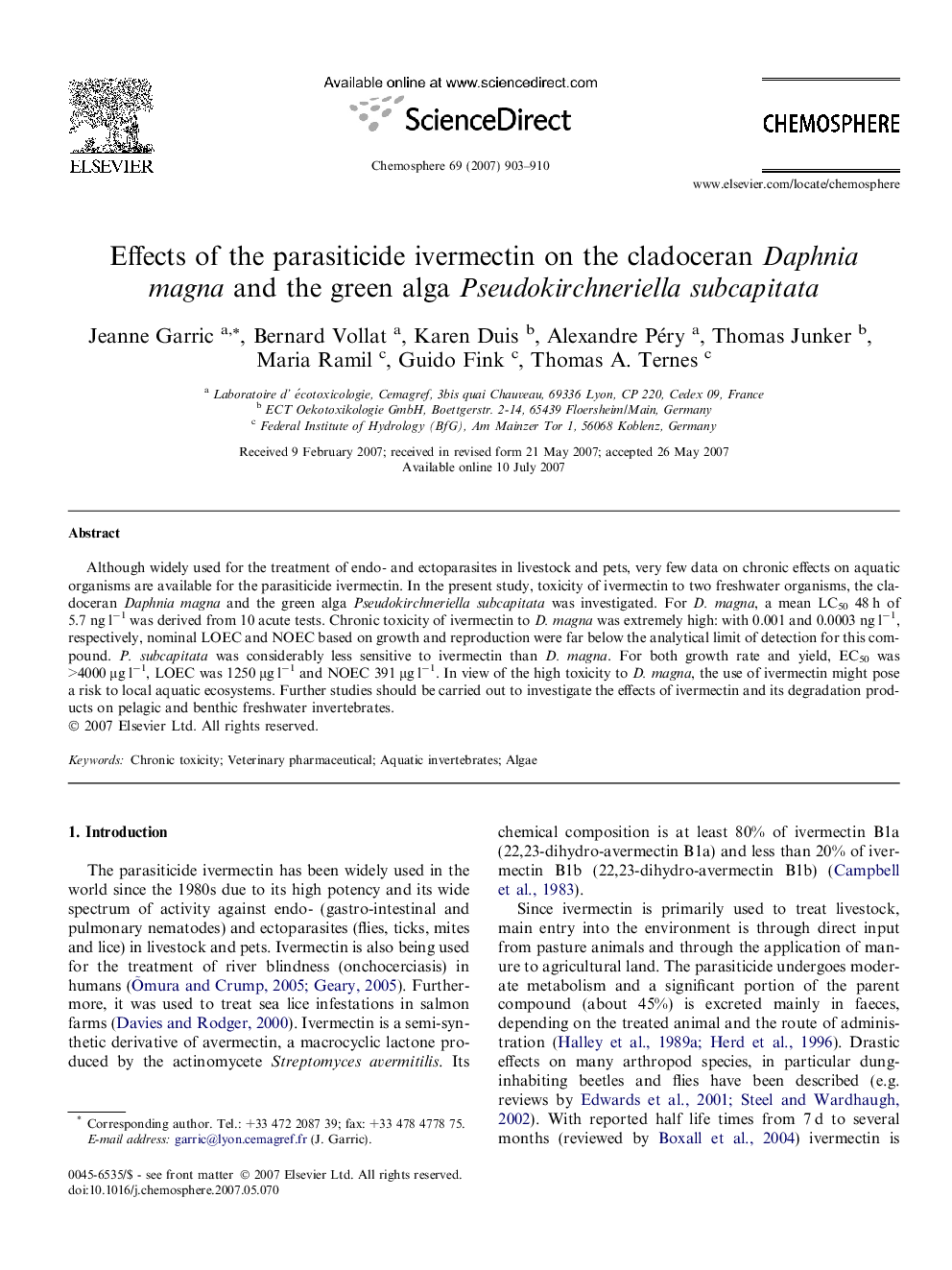| Article ID | Journal | Published Year | Pages | File Type |
|---|---|---|---|---|
| 4414571 | Chemosphere | 2007 | 8 Pages |
Although widely used for the treatment of endo- and ectoparasites in livestock and pets, very few data on chronic effects on aquatic organisms are available for the parasiticide ivermectin. In the present study, toxicity of ivermectin to two freshwater organisms, the cladoceran Daphnia magna and the green alga Pseudokirchneriella subcapitata was investigated. For D. magna, a mean LC50 48 h of 5.7 ng l−1 was derived from 10 acute tests. Chronic toxicity of ivermectin to D. magna was extremely high: with 0.001 and 0.0003 ng l−1, respectively, nominal LOEC and NOEC based on growth and reproduction were far below the analytical limit of detection for this compound. P. subcapitata was considerably less sensitive to ivermectin than D. magna. For both growth rate and yield, EC50 was >4000 μg l−1, LOEC was 1250 μg l−1 and NOEC 391 μg l−1. In view of the high toxicity to D. magna, the use of ivermectin might pose a risk to local aquatic ecosystems. Further studies should be carried out to investigate the effects of ivermectin and its degradation products on pelagic and benthic freshwater invertebrates.
